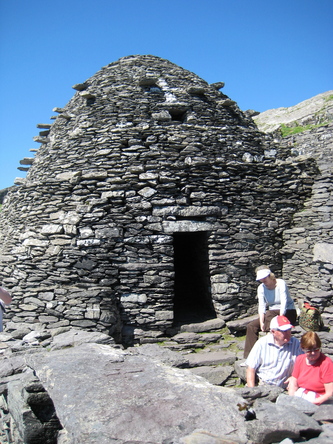 Is a place like Iona, the famous island off the coast of Scotland where Columba set up a monastic community, holy? Do you think some places — as places — are “thin” places? What is a holy place? How is a place holy?
Is a place like Iona, the famous island off the coast of Scotland where Columba set up a monastic community, holy? Do you think some places — as places — are “thin” places? What is a holy place? How is a place holy?
In his wonderfully written book, In Search of Sacred Places: Looking for Wisdom on Celtic Holy Islands
, Daniel Taylor and his wife (and family) reflects on his trip to Iona.
, Daniel Taylor and his wife (and family) reflects on his trip to Iona.
Jayne told Daniel that a certain place was Columba’s cell. Here are Daniel’s words:
“I can tell you that she is moved by seeing it, as she often is by places associated with devout people who have dedicated their lives to faith. I look at it for a minute and find that it doesn’t do much for me, as these places usually do not.”
Soon she says to him that it was not Columba’s cell but a well. This leads to further probings:
“Do we experience the sacredness of a place, do we experience merely our desire that a place be sacred?” Then: Is Iona a holy place? Yes. Is Iona a holy place? No. Is Iona a holy place? Yes and no. Is Iona a holy place? I don’t know.
And yet Daniel Taylor finds at Iona a “serene presence.” The place slowed him down to a walk, and it invited him to reflect.
The holiness, he sees, at Iona got its hands dirty. The Celts did not separate the physical from the spiritual. Celtic Christianity is a Western version of the iconic theology of the East.
Iona has farmers and a golf course and lots of sheep. And grace: 11 holes on the course and you can count your best nine!
Columba was not trying to escape the world to be holy, but to bring the holiness to everyday life. Indeed, they were trying to find the holiness that is in all things and bring it out.

